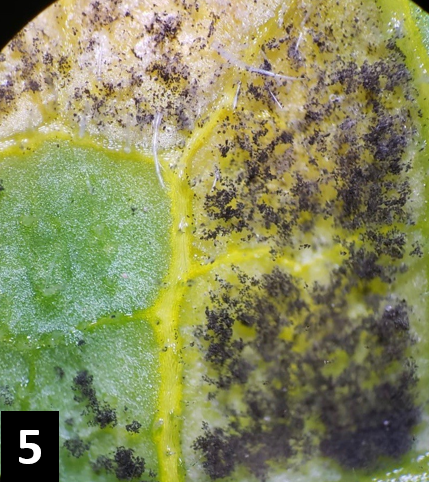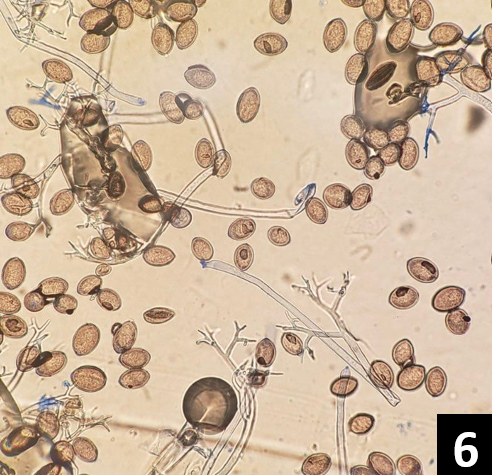Disease detected on cukes in Washtenaw County: Several counties have positive cucurbit downy mildew spores in air samples
All Michigan cucumber and melon growers should employ effective downy mildew fungicides immediately.

Advanced symptoms of cucurbit downy mildew disease on cucumber plants in a commercial organic planting has been verified in Washtenaw County on July 2, 2024, which is 17 days earlier than last year. Washtenaw County is located in southeast Michigan. The statewide spore trapping network to detect downy mildew spores in the air has had positives for Bay, Muskegon, Monroe and Saginaw counties. These results have been confirmed by qPCR. This indicates an influx of downy mildew sporangia in the state at a statewide level and a downy mildew fungicide program is recommended. Downy mildew outbreaks have been recently reported in New Jersey and western New York.
Our spore trap webpage is updated with the latest results of confirmed positives for field disease and spore trap air samples. The results from the spore traps are a few days behind due to processing of the spore tapes. We can distinguish between cucumber and hop downy mildew spores using molecular tools. Visit the Downy Mildew News page for spore trap results and current downy mildew news. Suspect samples should be submitted for a diagnosis. See instructions on how to submit samples.
Downy mildew development is influenced, in part, by temperature and moisture (relative humidity and the duration of leaf wetness). The cucurbit downy mildew pathogen (Pseudoperonospora cubensis) prefers cooler temperatures, overcast conditions, high humidity and long dew periods and can rapidly escalate in the state if fungicide sprays are delayed. Some of the state’s first pickling cucumber plantings were delayed this year due to weather and will need to be protected with fungicide to preserve fruit quality and yield.


It is very important that cucumber growers use proven downy mildew fungicides (shown below in alphabetical order). These fungicides were effective in our 2023 research field plots and include:
- Elumin + chlorothalonil or mancozeb
- Omega (Orbus) + chlorothalonil or mancozeb
- *Orondis Opti (Chlorothalonil is part of the premix, additional chlorothalonil is suggested. See label for maximum chlorothalonil rates.)
- Previcur Flex + chlorothalonil or mancozeb
- *Ranman + chlorothalonil or mancozeb
- Zampro + chlorothalonil or mancozeb
*Across many years of field tests, Orondis Opti and Ranman have been the leading fungicides in cucurbit downy mildew control in Michigan and would be especially recommended given the positive downy mildew air samples detected across the state and the positive disease sample from Washtenaw County.
Fungicides should be alternated so that resistance of the pathogen to the fungicide’s active ingredient does not develop. It is important that the fungicides be applied prior to plant infection. Waiting until downy mildew has developed in the field prior to applying fungicides can lead to control failure and pathogen resistance. Downy mildew can infect the cotyledons of cucumbers and has been observed in previous years under high disease pressure.
This material is based on work is supported by MSU Project GREEEN, a Michigan Specialty Crop Block administered by the Michigan Vegetable Council, the Agricultural Research Fund and the Pickle and Pepper Research Committee of Pickle Packers International, and the National Institute of Food and Agriculture, U.S. Department of Agriculture, award number 2020-51181-32139.



 Print
Print Email
Email

